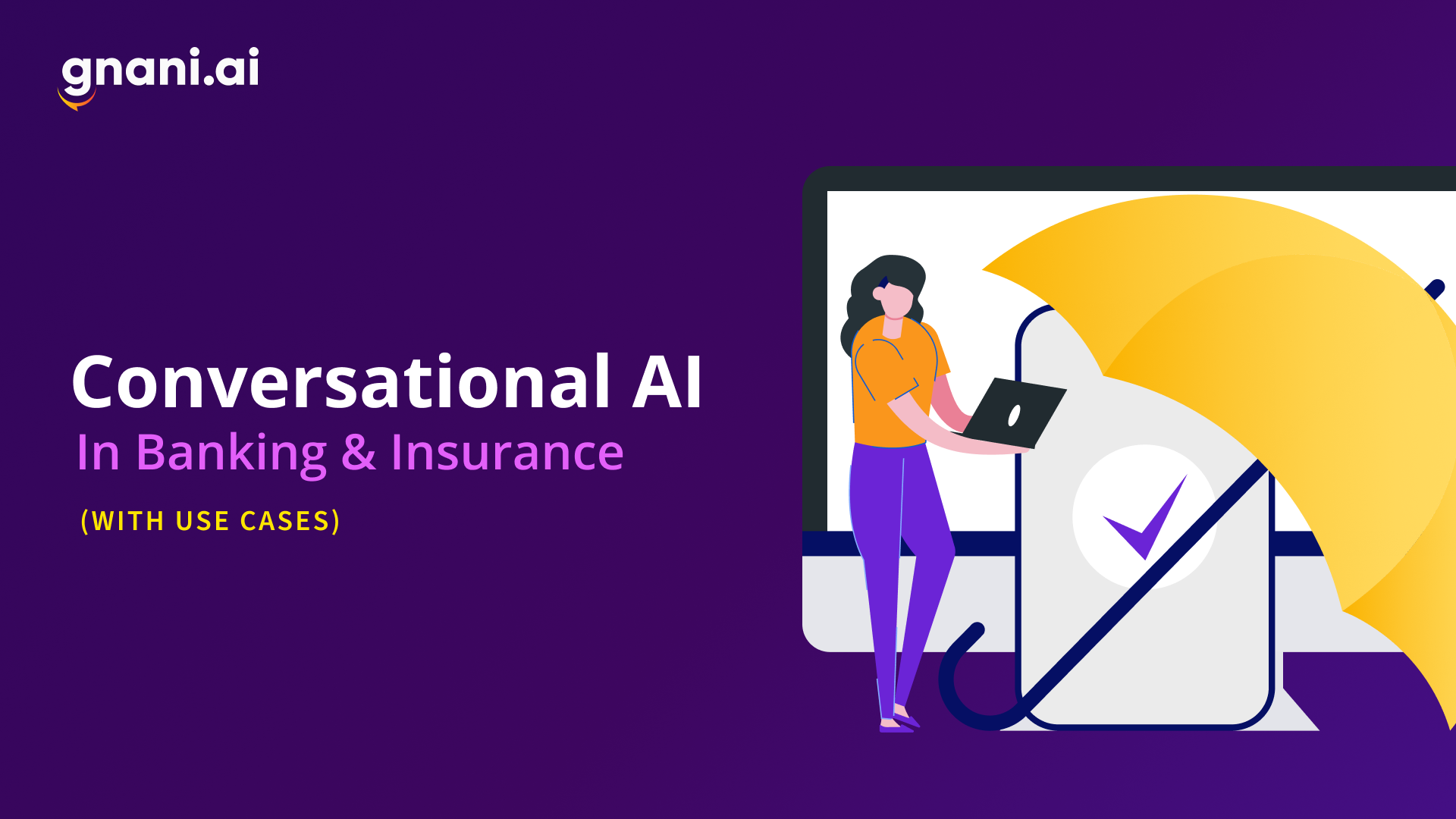The BFSI has been at the forefront of tech adoption. Now we can transfer money, see our account details, book a policy, etc., with just a tap of a button. BFSI sector is not only investing a lot in the transaction process but also investing millions of dollars to improve customer support services and security.; in these investments, Artificial Intelligence holds a major chunk of the share.
According to Allied Market Research, the valuation of AI in BFSI was pegged at USD 17.765 billion in 2018 and is expected to reach USD 247.367 billion by 2026 – registering a CAGR of a whopping 38.0%! This exponential growth points towards the discovery of practical and viable use cases of conversational AI in the sector, which we will be exploring in the following segment.
5 Use Cases Of Conversational AI in Banking And Insurance
Many top banks and insurance firms have already used AI in their business. Knowingly or unknowingly we are interacting with an AI in our customer journey. Here are five ways in which AI is revolutionizing banking and insurance as we know it:
Smart Digital Assistants
The BFSI industry was traditionally never deemed to be very customer-centric, but this trend has changed in the last decade or so. As the competition intensifies within the sector, customer service is a differentiator that can offer financial institutions a leg up. And digital assistants will play a clinching and crucial role in extending service personalization to the customers. Such assistants powered by conversational AI can improve the overall customer experience and improve retention.
Well-established banks like Barclays and Swedbank are leveraging conversational AI to simplify the customer experience and to perform a wide range of activities, from handling customer conversations and queries to guiding them through banking processes.
Data-Driven Personalized User Experience
A data-driven personalized approach is the future of CX in Banking and Insurance. Everything needs to be personalized for the user, from product recommendations to the payment process, but it is not an easy task.
An agent has to spend hours scraping through the data and finding out the best policy model, payment type, and policy benefits that the user might be interested in.
Thankfully, AI-powered data models make personalization and profiling easier. Conversational AI for the insurance sector engages with the leads and converts them eventually by persistent calling methodology.
Real-Time Fraud Detection
Due to fraudulent activities, losses have increased from $3.13 (2019) to $3.60 (2021) (https://risk.lexisnexis.com/insights-resources/research/us-ca-true-cost-of-fraud-study) for every dollar spent on a financial transaction. The BFSI industry is already plagued by external and internal fraud, compounding as miscreants turn smarter in executing their fraudulent activities.
Fortunately, AI engines can prove to be an invaluable asset in identifying variations from regular consumer behavior and patterns that point towards fraud so that security watchdogs can initiate real-time action against it to mitigate its impact. These conversational AI modules can be integrated with voice biometrics to seek authorization for actions. Take a look at our voice biometrics in banking article to have a clear idea of how voice biometrics improve online banking security.
Big players like JP Morgan Chase & Co. and HSBC have AI-based monitoring systems for preventive and curative action as and when required.
Growth Across Digital Channels
Traditional banks are facing stiff competition from tech enablers like Google and Apple, which have recently launched their own payment systems. As a result, they are under immense stress to scale their operations and conduct a massive overhaul to modernize their processes. Even leaders like Goldman Sachs are investing rampantly in fintech companies like Kensho to meet the requirements of their modern-day customers and increase their reach across digital channels.
The use of conversational AI unlocks the potential of running targeted marketing campaigns in an omnichannel ecosystem to consolidate the business’s position in the market. It empowers them to meet their customers on platforms where they already exist to cast a wider net in the digital universe, which propels their growth. Further, the performance of each channel can be monitored and analyzed through omnichannel analytics that offers high-level insights for diversification in campaigns.
Responsive Customer Service
As customers become the central focus of every organization across all verticals, the BFSI industry must also follow suit. And when it comes to making your customers feel special, there is no better way to achieve this goal by offering them an unparalleled customer service experience – achievable through AI-powered bots.
Right now, chatbots are used extensively in the BFSI sector. But, not all users are comfortable with chatbots, and some people may not have access to a stable internet connection. Conversational AI voice bots can engage with the customers on telephony lines, IVRS, and other communication channels and provide a human-like natural conversational experience.
AI-powered conversational voice bots understand the conversation, emotions, and tone deeply using the NLP and deep learning methodology. As a result, the user will experience empathetic customer support from the voice bots.
Future Where Clear Communication Is Important
Since the world is transforming from paper forms to digital forms, postcards to instant messaging, the BFSI industry is trying to cope up with the transformation.
Digital data was once considered a liability but has now become a hotspot for improvement, thanks to the advancements in technology. The integration of conversational AI will introduce industrial reforms and pave the way for its future where clear communication is essential.


